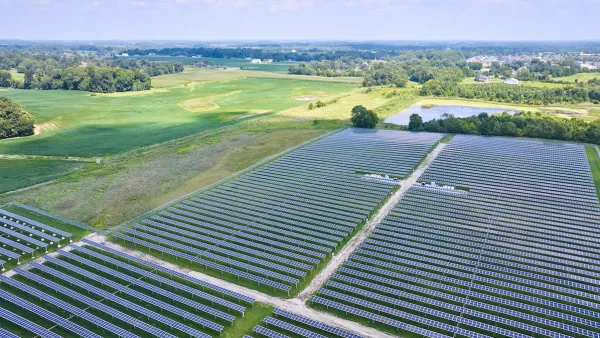Utility-scale solar is increasingly looking east to develop new facilities and encountering a common form of resistance from local communities.

Ellen Rosen reports for The New York Times on the increasingly common resistance by local stakeholders to the siting and development of solar power facilities, citing the example of Hecate Energy, which cut back plans to build a 500-acre solar energy facility in Copake, New York after outcry front he community.
Here's how Rosen summarizes the local example and its relevance to national trends:
The Copake fight mirrors similar battles raging across the country in rural areas like Lake County, Ore.; Clinton County, Ohio; and Troy, Texas. Developers say industrial-scale solar farms are needed to meet the nation’s goals to mitigate the rise of climate change, but locals are fighting back against what they see as an encroachment on their pastoral settings, the loss of agricultural land and a decline in property values.
According to Rosen, solar facilities were formerly more common in the U.S. West, but that is changing as governments at various levels push for more renewable energy and large corporations, like Amazon and Microsoft, move toward renewable energy to reduce their corporate carbon footprints. The source article includes more of the regulatory context, as well as the political considerations of renewable energy development.
FULL STORY: As Demand for Green Energy Grows, Solar Farms Face Local Resistance

National Parks Layoffs Will Cause Communities to Lose Billions
Thousands of essential park workers were laid off this week, just before the busy spring break season.

Retro-silient?: America’s First “Eco-burb,” The Woodlands Turns 50
A master-planned community north of Houston offers lessons on green infrastructure and resilient design, but falls short of its founder’s lofty affordability and walkability goals.

Delivering for America Plan Will Downgrade Mail Service in at Least 49.5 Percent of Zip Codes
Republican and Democrat lawmakers criticize the plan for its disproportionate negative impact on rural communities.

Test News Post 1
This is a summary

Test News Headline 46
Test for the image on the front page.

Balancing Bombs and Butterflies: How the National Guard Protects a Rare Species
The National Guard at Fort Indiantown Gap uses GIS technology and land management strategies to balance military training with conservation efforts, ensuring the survival of the rare eastern regal fritillary butterfly.
Urban Design for Planners 1: Software Tools
This six-course series explores essential urban design concepts using open source software and equips planners with the tools they need to participate fully in the urban design process.
Planning for Universal Design
Learn the tools for implementing Universal Design in planning regulations.
EMC Planning Group, Inc.
Planetizen
Planetizen
Mpact (formerly Rail~Volution)
Great Falls Development Authority, Inc.
HUDs Office of Policy Development and Research
NYU Wagner Graduate School of Public Service





























